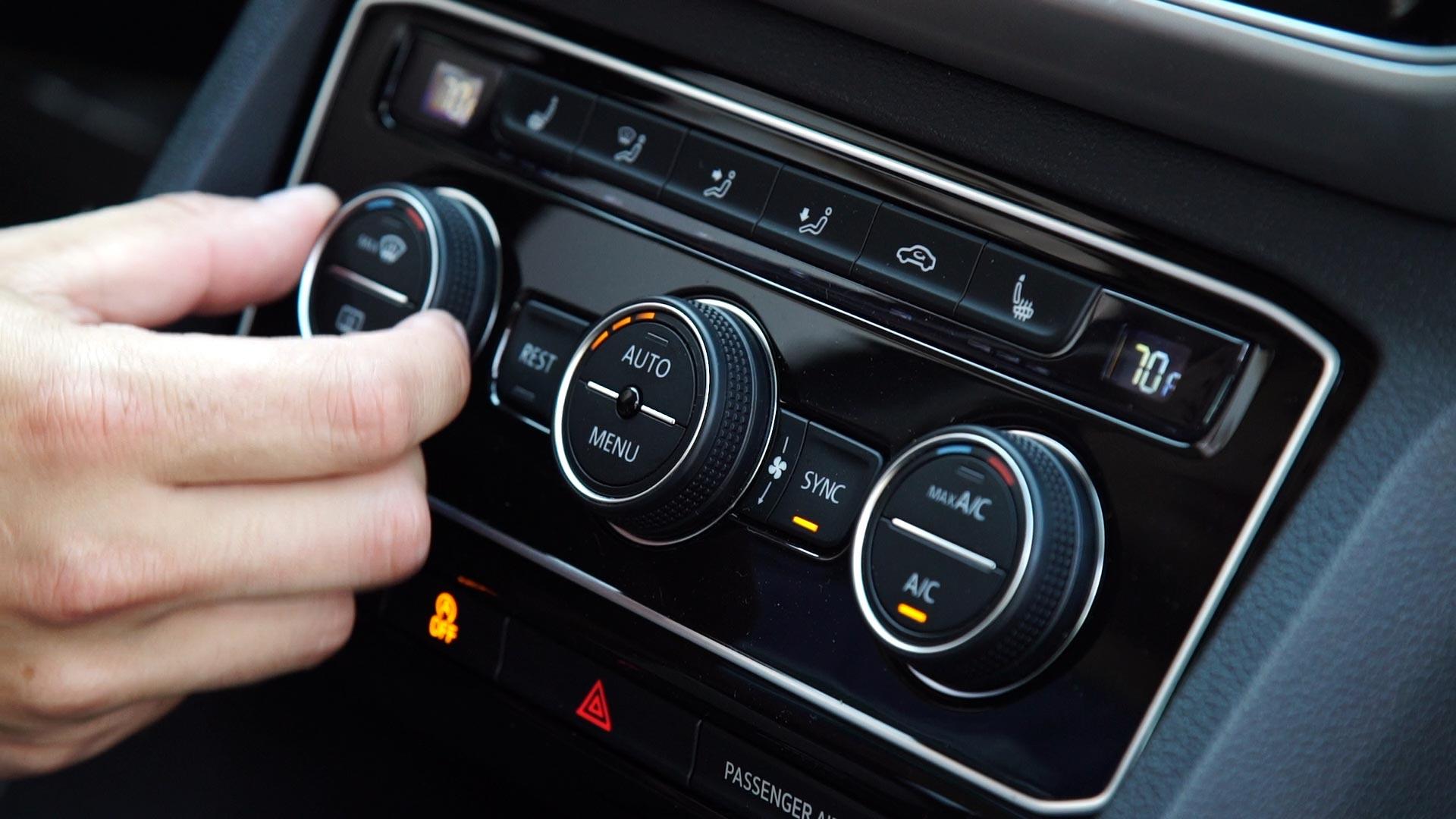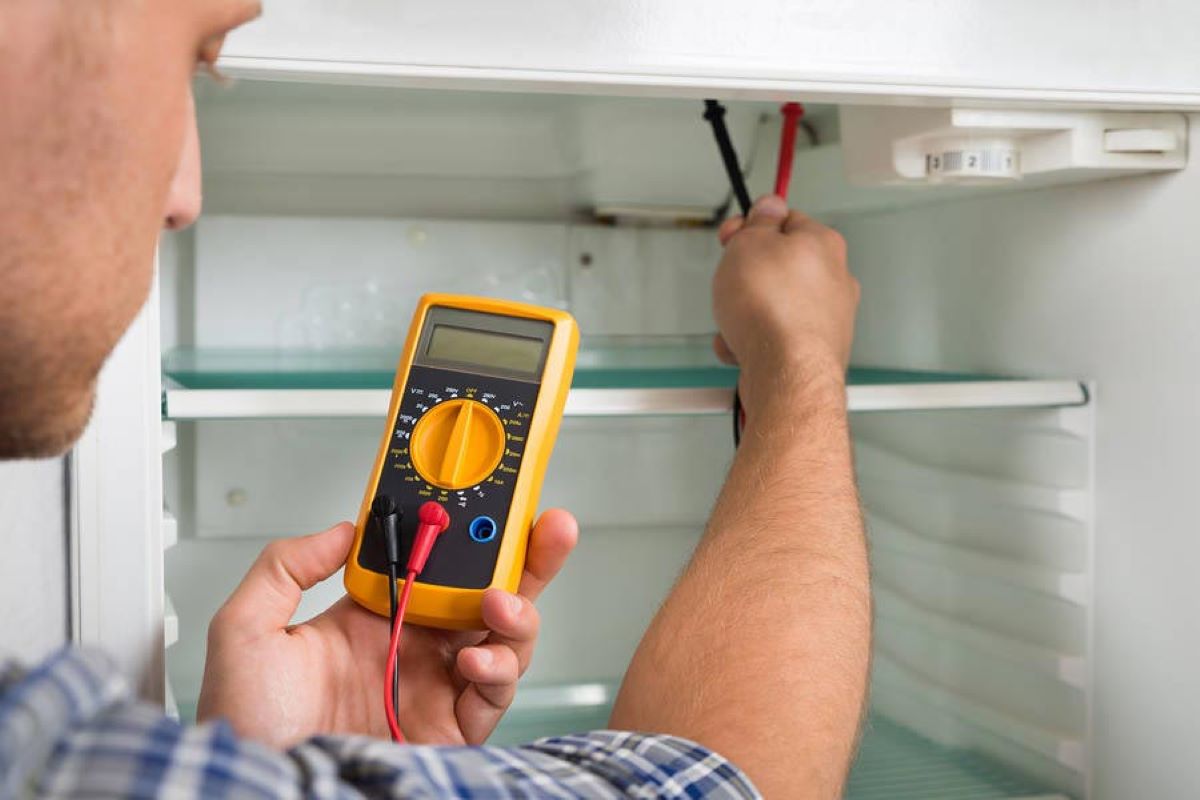Home>Home Maintenance>How To Make My Car Air Conditioner Colder


Home Maintenance
How To Make My Car Air Conditioner Colder
Modified: October 20, 2024
Learn how to make your car air conditioner colder with these simple home maintenance tips. Keep your vehicle cool and comfortable all summer long.
(Many of the links in this article redirect to a specific reviewed product. Your purchase of these products through affiliate links helps to generate commission for Storables.com, at no extra cost. Learn more)
Introduction
Welcome to the world of car maintenance! As a car owner, one of the essential aspects of keeping your vehicle comfortable during those hot summer drives is ensuring that your car air conditioner is working optimally. If you find yourself wondering how to make your car air conditioner colder, then you’ve come to the right place.
In this article, we will guide you through several steps and tips to help you maximize the cooling potential of your car air conditioner. From checking and cleaning the condenser to recharging the refrigerant and inspecting the blower motor, we will cover all the necessary aspects to make your car air conditioner colder and more efficient.
So, whether you’re planning a summer road trip or simply want to beat the heat during your daily commute, follow along and discover how to make your car air conditioner colder, providing you with a more comfortable and enjoyable driving experience.
Key Takeaways:
- Keep your car air conditioner colder by cleaning the condenser, recharging the refrigerant, and checking for air leaks. Regular maintenance and adjusting temperature settings can also enhance cooling efficiency.
- To make your car air conditioner colder, inspect the blower motor, replace the cabin air filter, and monitor refrigerant levels. Utilize shade, run the system periodically, and clean the interior for optimal performance.
Read more: How To Make My AC Colder In My Car
Checking the Air Conditioner
Before diving into any repairs or adjustments, it’s crucial to start by checking your car’s air conditioner for any obvious issues. Here are a few steps to help you identify potential problems:
- Turn on the A/C: Start your car and turn on the air conditioner to the maximum cool setting.
- Check for cool air: Feel the air coming out of the vents. If the air isn’t as cool as you’d like it to be, there may be an issue with the system.
- Listen for unusual sounds: Pay attention to any strange noises coming from the air conditioner when it’s turned on. Unusual sounds could indicate a problem with the compressor or other components.
- Monitor air flow: Ensure that the airflow is strong and consistent from all the vents in the car. Weak airflow or uneven distribution could suggest a blockage or malfunction.
If you notice any issues during this preliminary check, it’s recommended to consult a professional mechanic or technician for a more in-depth inspection and diagnosis.
Alternatively, if the air conditioner seems to be working fine, proceed to the next steps to optimize its performance and make it colder.
Cleaning the Condenser
The condenser is a vital component of the car’s air conditioning system. It helps dissipate heat from the refrigerant, allowing it to cool down and circulate through the system. Over time, the condenser can accumulate dirt, dust, and debris, hindering its efficiency and reducing the overall cooling capacity of the air conditioner.
To clean the condenser and improve its performance, follow these steps:
- Locate the condenser: The condenser is typically located near the front of the vehicle, in front of the radiator. It looks like a small radiator with a series of thin, metal fins.
- Turn off the engine: Before proceeding, make sure the engine is turned off and has had time to cool down.
- Clean the condenser fins: Using a soft brush or a specialized fin comb, gently brush or straighten the fins on the condenser. Be careful not to bend or damage them in the process.
- Remove debris: Inspect the area around the condenser and remove any debris, such as leaves, bugs, or dirt, that may be blocking the airflow.
- Use compressed air: If the fins are heavily clogged, you can use compressed air to blow away the debris. Make sure to hold the nozzle at a safe distance to avoid bending the fins or causing damage.
Cleaning the condenser will improve the airflow and cooling capacity of your air conditioner, resulting in colder air output. It’s a relatively simple task that can be done periodically to maintain optimal performance.
Once you’ve cleaned the condenser, move on to the next steps to further enhance the cold air output of your car air conditioner.
Recharging the Refrigerant
If you’ve noticed that your car air conditioner is not producing cold air or the air is not as cold as it used to be, it might be a sign that the refrigerant levels are low. Over time, refrigerant can leak or evaporate, leading to diminished cooling performance. Recharging the refrigerant is a straightforward process that can help restore the cooling capacity of your car’s air conditioner.
Here’s how you can recharge the refrigerant:
- Consult the owner’s manual: Check the owner’s manual to determine the type and amount of refrigerant required for your specific car model. It’s essential to use the correct refrigerant to avoid damaging the system.
- Locate the low-pressure port: The low-pressure port is typically located near the firewall in the engine compartment. It is identified by a blue or black dust cap.
- Attach the refrigerant gauge and hose: Attach the hose from the refrigerant recharge kit to the low-pressure port. Follow the instructions provided with the recharge kit.
- Start the engine and turn on the A/C: Start the engine and turn on the air conditioner to the maximum cool setting.
- Monitor the recharge gauge: While the A/C is running, monitor the recharge gauge to ensure that it stays within the recommended pressure range. Avoid overcharging the system.
- Disconnect the hose: Once the refrigerant is fully charged, disconnect the hose from the low-pressure port and replace the dust cap.
Recharging the refrigerant should be done carefully and in accordance with the manufacturer’s instructions. If you’re unsure or uncomfortable with performing this task yourself, it’s best to seek assistance from a professional mechanic or technician.
Recharging the refrigerant can significantly improve the cooling performance of your car air conditioner, resulting in colder and more refreshing air during those hot summer months.
Checking the Cabin Air Filter
The cabin air filter plays a crucial role in maintaining the air quality inside your car’s cabin by filtering out dust, pollen, and other contaminants. Over time, the filter can become clogged, restricting airflow and reducing the efficiency of your car’s air conditioner. Checking and replacing the cabin air filter regularly is essential for optimal cooling performance.
Here are the steps to check the cabin air filter:
- Locate the cabin air filter: Refer to your car’s owner’s manual to find the location of the cabin air filter. It is typically located behind the glove compartment or under the dashboard.
- Remove the filter cover: Once you’ve located the cabin air filter housing, remove the cover or access panel to reveal the filter.
- Inspect the filter: Take a close look at the filter to see if it’s dirty, clogged, or damaged. If it appears dirty or is approaching the recommended replacement interval, it’s time to replace it.
- Replace the filter: If the filter is dirty or clogged, remove it from the housing and replace it with a new one. Make sure to install the new filter in the correct orientation, following the arrows or the manufacturer’s instructions.
- Secure the filter cover: Once the new filter is in place, secure the filter cover or access panel to ensure proper functioning.
By regularly checking and replacing the cabin air filter, you’ll ensure that the air conditioner can deliver colder and cleaner air into the car’s cabin, enhancing your comfort and overall driving experience.
Remember to consult your car’s owner’s manual for specific instructions on checking and replacing the cabin air filter, as the process may vary depending on the make and model of your vehicle.
Check and replace the air filter, clean the condenser coils, and make sure the refrigerant level is correct. Also, park in the shade and use a sunshade to keep the car cooler.
Read more: How To Make My Danby Kegerator Colder
Inspecting the Blower Motor
The blower motor is responsible for circulating the cold air produced by the air conditioning system throughout the car’s cabin. If the blower motor is not functioning properly, it can affect the airflow and cooling performance of the air conditioner. Therefore, inspecting the blower motor is essential as part of your efforts to make your car air conditioner colder.
Here are the steps to inspect the blower motor:
- Locate the blower motor: The blower motor is typically located under the dashboard on the passenger side of the vehicle. Refer to your car’s owner’s manual if you’re having trouble finding it.
- Check for debris: Inspect the blower motor and fan for any debris, such as leaves or dirt, that may be obstructing its operation. Remove any debris carefully to allow proper airflow.
- Test the motor: Turn on the car’s engine and the air conditioner. Listen for any unusual noises coming from the blower motor. If you hear grinding or squealing sounds, it may indicate a problem, and the motor may need to be replaced.
- Check for proper airflow: Feel the air coming out of the vents. If the airflow is weak or inconsistent, it could be a sign of a malfunctioning blower motor.
- Inspect the blower motor resistor: The blower motor resistor controls the speed of the blower motor. If the air is only blowing at one speed or not at all, the resistor may need to be replaced.
If you encounter any issues during the inspection, such as unusual sounds, weak airflow, or a malfunctioning motor, it’s best to consult a professional mechanic or technician for further diagnosis and repair.
By ensuring the proper functioning of the blower motor, you’ll maximize the airflow and enhance the cooling capacity of your car’s air conditioner, resulting in colder air inside the cabin.
Adjusting the Temperature Settings
One of the simplest yet effective ways to make your car air conditioner colder is by adjusting the temperature settings. Depending on your car model, you may have different temperature control options, such as manual or automatic controls. Here are some steps you can take to optimize the temperature settings:
- Start with the lowest setting: Set the temperature control to the lowest possible setting, such as 60 degrees Fahrenheit (15 degrees Celsius), and gradually adjust it to your desired comfort level.
- Activate the recirculation mode: Engage the recirculation mode in your car’s air conditioner. This setting recirculates the already cooled air inside the cabin, resulting in faster cooling and colder air.
- Experiment with fan speed: Adjust the fan speed to find the optimal balance between air circulation and noise levels. Higher fan speeds generally result in cooler air, but it can also generate more noise.
- Consider dual-zone temperature control: If your vehicle is equipped with dual-zone temperature control, customize the temperature settings for each zone to suit the preferences of the driver and passengers. This allows everyone to enjoy individualized comfort.
Keep in mind that the actual temperature achieved may vary depending on various factors, including the outside temperature, vehicle size, and overall performance of the air conditioning system. It’s important to find the right balance between comfort and fuel efficiency.
Experiment with different temperature settings to discover the sweet spot that provides the coldest air while keeping you comfortable during your drives.
By understanding and utilizing the temperature control options available in your car, you can effectively make the air conditioner colder and enjoy a more refreshing driving experience.
Checking for Air Leaks
Air leaks in the car’s air conditioning system can significantly impact its performance by allowing cold air to escape and warm air to enter. Therefore, checking for and addressing any air leaks is crucial in your quest to make your car air conditioner colder. Here’s how you can do it:
- Inspect the seals: Check the seals around the doors, windows, and sunroof for any signs of damage or wear. Damaged or worn seals can result in air leaks. Replace any faulty seals to ensure a tight seal.
- Examine the ductwork: Inspect the ductwork, including the vents and hoses, for any cracks, holes, or loose connections. These can contribute to air leaks. Seal any cracks or holes with appropriate tape or sealant, and tighten any loose connections.
- Use a smoke test: In more severe cases, where it’s challenging to pinpoint the air leak, a smoke test may be necessary. This involves using specialized equipment to introduce smoke into the system and then observing where the smoke escapes, indicating the location of the air leak. This test is best performed by a professional technician.
- Consider professional inspection: If you suspect there may be significant air leaks or if you’re unable to locate the source of the problem, it’s advisable to consult a professional mechanic or technician. They have the expertise and tools to identify and address any air leaks in the system.
By addressing air leaks, you can prevent cold air from escaping the cabin, allowing your car air conditioner to function more efficiently and produce colder air. It not only enhances your driving comfort but also improves the overall performance of the air conditioning system.
Regularly checking for air leaks and taking appropriate action to seal them can substantially improve the cooling performance and efficiency of your car’s air conditioner, resulting in colder air throughout your journeys.
Proper Use and Maintenance Tips
Aside from the specific steps mentioned earlier, there are general tips and maintenance practices that can help ensure your car air conditioner remains colder and performs optimally. Follow these guidelines to enhance the cooling efficiency and longevity of your system:
- Regularly clean the interior: A clean interior, especially the dashboard and vents, helps maintain proper airflow and prevents dust and debris from accumulating in the air conditioning system.
- Use shade or window visors: Whenever possible, park your car in the shade or utilize window visors to reduce the amount of heat trapped inside the vehicle. This will reduce the strain on the air conditioner and help it cool the car more efficiently.
- Service the system annually: Schedule an annual maintenance service for your car’s air conditioning system. A professional technician can inspect, clean, and address any potential issues before they escalate, ensuring optimal performance.
- Run the system periodically: Even during cooler months, it’s beneficial to run the air conditioner for a few minutes every month. This helps keep the system lubricated and prevents seals from drying out, ensuring it remains in good working condition.
- Monitor refrigerant levels: Keep an eye on the refrigerant levels and recharge as needed. Low refrigerant levels can hinder the cooling capacity of the air conditioner.
- Replace the cabin air filter regularly: Follow the manufacturer’s recommendations and replace the cabin air filter at the recommended intervals to ensure proper airflow and clean air inside the cabin.
By following these proper use and maintenance tips, you can prolong the life of your car’s air conditioning system and keep it running efficiently, providing you with consistently colder air and a more comfortable driving experience.
Remember, if you encounter any significant issues or have doubts about the air conditioner’s performance, it’s always advisable to consult a professional mechanic or technician for a professional inspection and necessary repairs.
Conclusion
Having a properly functioning and efficient car air conditioner is essential for comfortable and enjoyable drives, especially during hot summer months. By following the steps and tips outlined in this article, you can make your car air conditioner colder and enhance its cooling performance.
Starting with a thorough inspection of the air conditioner, cleaning the condenser, and recharging the refrigerant are crucial steps to optimize its functionality. Checking and replacing the cabin air filter, inspecting the blower motor, and adjusting the temperature settings also contribute to a colder and more refreshing driving experience.
Additionally, addressing any air leaks in the system, practicing proper use, and regularly maintaining the air conditioner are important for long-term efficiency and performance. Paying attention to small details, such as cleaning the interior and utilizing shade or window visors, can further improve the cooling efficiency of your car’s air conditioner.
While these steps and tips can help make your car air conditioner colder, it’s important to remember that in some cases, professional assistance may be necessary, especially when diagnosing and repairing complex issues. Consulting a professional mechanic or technician can provide you with expert guidance and ensure proper maintenance and repair of your air conditioning system.
By taking proactive measures and implementing these suggestions, you can enjoy a cooler and more comfortable driving experience, no matter how hot it gets outside.
Stay cool and safe on the road!
Frequently Asked Questions about How To Make My Car Air Conditioner Colder
Was this page helpful?
At Storables.com, we guarantee accurate and reliable information. Our content, validated by Expert Board Contributors, is crafted following stringent Editorial Policies. We're committed to providing you with well-researched, expert-backed insights for all your informational needs.













